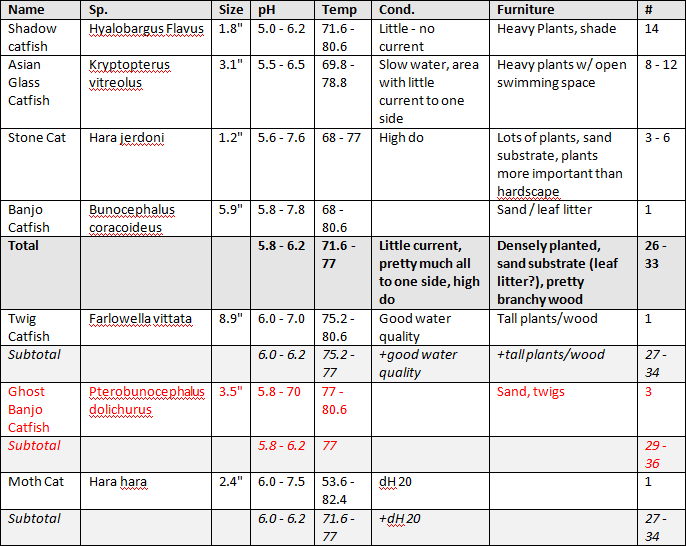I was looking through the current stock list at TedsFishroom and came across the "Pterobunocephalus sp. - dark color" and fell in love. But I'm a little unsure if I could house them comfortably, so I was looking for some advice.
I had e-mailed Ted asking about the ID, to get a better idea of the parameters for this particular species, but he was unable to give me any more specifics than the genus and that they were collected from somewhere in Peru. If anyone is able to ID a more specific species please let me know, but for now I've been going off of the Cat-E-Log information for (since the other species had no water parameter information).
My dilemma is that the temperature range for P. dolichurus hardly overlaps with the fish I was hoping to house it with. The initial thought was that they would make a great addition to my future Catfish-Only Tank (which I was planning out here awhile ago...it's still just a plan at the moment), but some of the species I was wanting to keep in that tank have a lower range. They pretty much only overlap at 77 degrees, which is a little narrow for my comfort.
I like to plan my tank stocking with a chart to make comparing parameters easier, so here's the one I made for that tank:

The four species at the top are fish that I am definitely planning to keep (if I were to be flexible with any, it's probably be the H. jerdoni, though with other "banjo cats" in the tank I would probably be more flexible with B. coracoideus as well.), and the three fish at the bottom are possible additions, with the "Subtotal" below them comparing their parameters to the four definite species. The information regarding the addition of three Pterobunocephalus sp. is in red.
My other alternative would be to house them in the sump of my 150g, but I have the same dilemma in that tank with the temperature range (also just at 77 degrees exactly), and was also planning to use the sump for other things.
So that leaves either setting up a species only tank for them (which I could do, I have spare tanks that will be vacant shortly, but I'm supposed to be downsizing and there'd be less space than a 55g...most likely they would have to go in a 20g high, which is less space than I'd like, unless I managed to get another tank in my house) or pass up on these beautiful little cats.
So what should I do?








